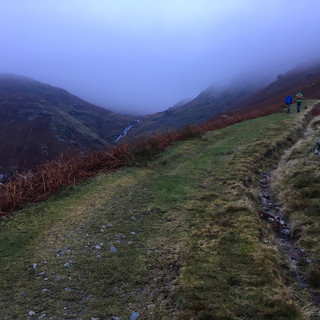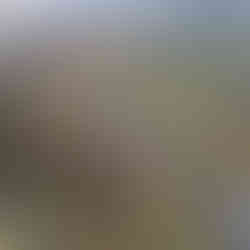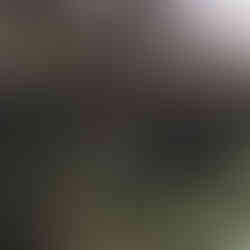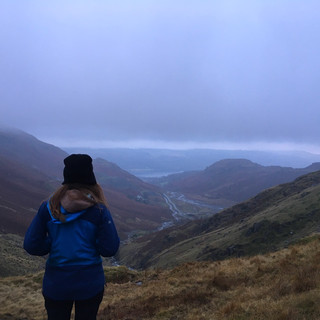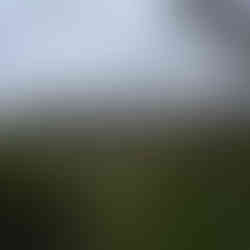Coppermine Valley in Winter
- Debi Holland
- Jan 8, 2020
- 5 min read

Winter can bring short days, challenging weather and an overwhelming desire to hibernate but equally fighting that urge can make way for some of the most rewarding outdoor adventures in breathtaking landscapes and provide an incredible sense of achievement.

Spending December in the Lake District may not be your first thought for a winter holiday destination but we decided to escape far from the maddening crowds of shops and Christmas commercialism and immerse ourselves in the slower pace of life, surrounded by nature and the rugged landscape of Coniston.

Coniston has a rich mining history and the copper mines at the foothills of the Old Man of Coniston are a stark reminder of times gone. In its hay day in the 1800s around 600 people worked here above and underground.

Huge piles of rock tower above bracken-filled hills and sheep tracks covering a maze of tunnels burrowing 1000ft down. Now the grey hues of industry blend into the natural landscape and fuse to become one. (Click gallery to enlarge photos).
The Lake District is punctuated with disused mines. A historic record of past industry that breathed life in to the local communities but which have subsequently ebbed away.

I discovered my 'inner child' emerges whenever I find one of the disused mines. It is like discovering a secret. Taking care to stick to paths and not disturb sites, you can get a first hand sense of the harsh working life folk endured; the damp, the cold, the dark vegetation-free shafts.
Please excuse the bumpy filming, I was balancing over a muddy bog but it does give a good sense of place with the sound of the dripping water, you can 'feel' the damp and darkness.
Legally protected as a Site of Special Scientific Interest (SSSI) and as a Scheduled Monument this area is a heritage site and education centre for future generations.

From the vast rolling landscape an ominous mountain of slate or dry stone wall will suddenly reveal an opening, a manmade gorge that leads to a shaft which once would have been a hive of activity but now has been reclaimed by nature and swallowed by moss, ferns and trees whose roots cling precariously to the rock.

Against the odds the natural fell flora is plentiful even at altitude. Mountain streams lay way to a myriad of bog plants that manage to thrive in challenging conditions.

The running water attracts a diverse collection of plants, many dormant now but in summer this spot, at roughly 260m above sea level, is bursting with life. No sign of it in December but I had the fortune of discovering the carnivorous plant Drosera, Sundew at this very spot last August.

Although not a commonly found plant in the UK, the flowerless spiky foliage of quillwort litters the edges of the Lakeland mountain streams; as do Juncus effusus, the common rush whose coarse narrow leaves act as a beacon to where water can be found.

Grazing has taken its toll on the landscape and many plants over time retreated to the safer refuge of gullies, crags and scree. These artic alpines were ideally adapted to the cool Cumbria environment but as temperatures have climbed so have they and now many of these precious plants have retreated to higher altitudes to seek more favourable growing conditions. These are plants I try to seek out whenever I am walking in the Lakes.

Life will find a way and it is wonderful to see first hand the personal battles many of the these plants have overcome to secure their future on this planet like the numerous trees that have entwined their roots through sheer rock, defying all logic but retaining a firm stance, securely clinging to the mountain side. Anchored against the elements.
The ascent is rewarded with a spectacular panoramic view out to Coniston Water and Grisdale Forest. The old mining tower at Old Engine Shaft Red Dell stands like a military sentry guarding the entrance to the higher mountainous regions towards Wetherlam.

We have taken our teenage son out on the fells since he was a baby and so it feels like home. It is a great place for us as a family to share an experience away from the hectic distractions of everyday life and computer screens! Some of our best chats can be had whilst out walking.

The fells undulate between copper-coloured bracken, lichen carpeted rocks to barren slate.

Many plants self-seed between the rock cracks. In late December rosettes of foxgloves litter the landscape, moss and lichen cling to boulders and grasses thrive.
Copper appeared in this valley approximately 460 million years ago via the eruption of super volcanoes and then earthquakes, injecting this valuable commodity into the rock.

October 2019 hosted a temporary Gilded Sculpture Trail 'Copper in our Veins' by local artists Jessica Elleray and Siobhan Miles-Moore to celebrate the area's copper heritage.

Now all that remains is the six foot 20 tonne copper clad Heart Stone which shines out against its grey back drop as a brilliant reminder of the valley's past. The exhibition and valley were featured on BBC Countryfile also in October 2019.

It is great to inspire kids to embrace the outdoors so adding points of interest like disused mines and coming home in the dark are an ideal way to turn a walk into an adventure and making memories
Thick cloud and drizzle engulfed the peaks and crept down the valley but this only served to provide an exhilarating challenge and bathed the landscape in mystery; not allowing the whole picture to reveal itself in its entirety but keep some of its secrets intact.

The warm glow of Mountain Cottages attracted us like moths. Sympathetically restored these stone buildings sit boldly in this historic landscape. You could easily be visiting the French Alps but instead you are under the watchful peak of The Old Man of Coniston.
We were amused to find one of the cottages called 'Sawyers Cottage' which is the name of our son and another 'Carpenters Cottage' coincidentally my husband's profession!
This particular walk was late afternoon just before Christmas so we were racing against the failing light and as it goes, the weather.
There is nothing more exciting to heighten the senses and add an extra layer of adventure than to come home in the dark. If planned carefully then this can be a safe but exhilarating way to end a walk on the fells. We never leave home without a head torch... just in case!
Of course don't set yourself up for a drama and end up stranded on the fells lost in the pitch dark calling Mountain Rescue but applying a sensible judgement call with timings, you can get yourself back down to safety but with a bit of added thrill.

I often feel some of our most memorable trips have been when the conditions are less than favourable. The environment makes you think, take it seriously, embrace the elements, it reminds you to never leave home without your ordnance survey map, compass and head torch however short the planned route, It also increases my sense of purpose and personal achievement and adds merit to the reward of a cosy visit to the pub afterwards.

Precious family times that I will always treasure!

Hike route: Starting at The Sun, Sun Hill, Coniston, LA21 8HQ follow the mountain path up alongside the river and cross the Miners Bridge (grid ref: SD293981) then turn left up the road, waterfall on your left hand side, until you reach the hydropower sloosh gate where you have your first view of Coppermine Valley.
Take the right hand side high track, passed the row of cottages up to the disused water tower (grid ref: SD289990) at Old Engine Shaft, Red Dell looking down on the disused mine. Cross the waterfall and traverse along the left hand side terraced 'rough' mountain path towards Tongue Brow and then descend back down into the copper mine by the main cottages and information centre.
Reverse your route home, cross back over the Miners Bridge and follow the river back down the valley to The Sun 'above' Coniston where you will discover a fine collection of local ales.
Distance: 5km
Height gain: 309 metres
Duration (approximate as dependent on walking speed & stops): 1 hour 20 minutes
Difficulty level: Moderate

All photos by Debi Holland © 2020






